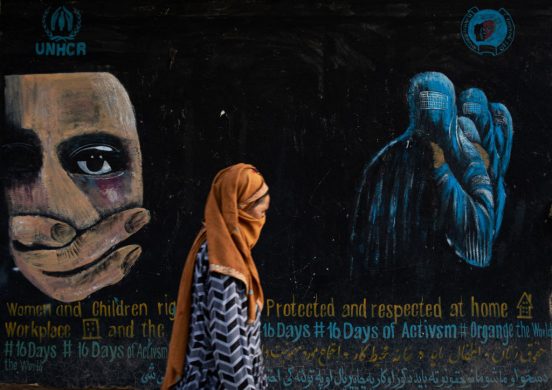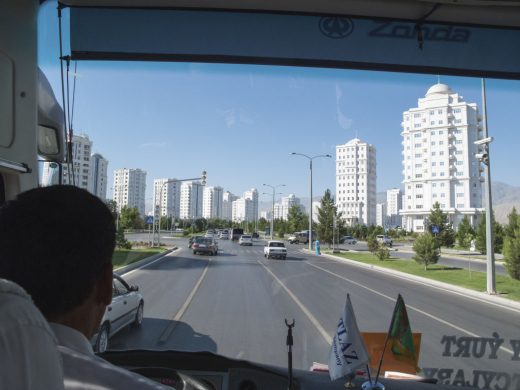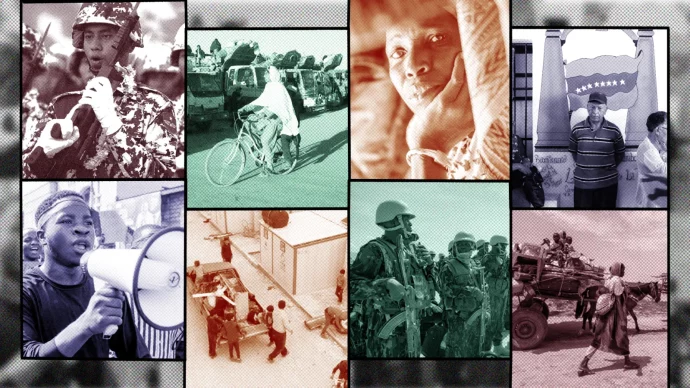Nyåbnet jernbanestrækning sænker transportomkostningerne og skaber jobs. Samtidig giver det håb om, at Afghanistan på sigt kan udvikle sig til et regionalt transportcentrum for handel mellem Syd- og Centralasien. Asien Development Bank, MANILA, 6 May 2014. ADB has helped open up Afghanistan to increased trade and commerce through the construction of a new rail system. For Afghanistan, the country’s first railroad has resulted in a steady supply of lifesaving goods and a vital link to Uzbekistan, its vibrant neighbor. For Jan Mohammad, the impact has been much more personal. It has given him a job that has changed the lives of his five children. “My income has made their education possible,” Jan says. Jan works at the railway station in the town of Naibabad, along the northern Afghanistan border, unloading freight. He can earn over $300 a month working for the rail company – more than triple what he once earned as a day laborer. The extra money is putting his three sons and two daughters through school. Jan is one of millions of people in Afghanistan whose lives have been changed by the railroad. It is the first rail line in Afghanistan’s history and runs 75 kilometers from the city of Mazar-e-Sharif to Hairatan, a town on the country’s northern border with Uzbekistan. Built with a $165 million grant from ADB, the project has helped open the war-torn country to increased trade and commerce. “Afghanistan has the potential to be a regional crossroads, as it was when trade flourished along the routes of the ancient Silk Road,” says Balabhaskara Reddy Bathula, a transport specialist in ADB. In December 2011, 2 years after the project broke ground, the Hairatan to Mazar-e-Sharif railway was operational. Goods could be transported in trucks along Afghanistan’s main road system from Mazar-e-Sharif in Balkh Province, about 300 kilometers north of the capital city of Kabul, and then shipped efficiently by rail into Uzbekistan and further to Central Asia and Europe. Vital relief goods and other materials could flow in from the other direction as well. [video:https://www.youtube.com/watch?v=0gSFOyaWKc8] Video: Projektets tilblivelse Faldende transportomkostninger og flere arbejdspladser. More than 7 million people have benefited from the new railway through jobs and increased trade. This has included freight operators, traders, businesses, and local communities served by the railway. “Afghanistan has the potential to be a regional crossroads, as it was when trade flourished along the routes of the ancient Silk Road.” Balabhaskara Reddy Bathula, transport specialist in ADB Having an efficient, safe, and reliable railway transport network operating in northern Afghanistan has resulted in people getting jobs in areas where opportunities were very limited. Employment in the project area has grown by more than 10% per year since 2010. About 1,200 people are currently employed in logistics and unloading operations, while more jobs are expected to emerge in logistics services at railroad stations. The benefits are spreading throughout Afghanistan as the railway promotes economic growth, as well as regional trade and cooperation. The lower transport costs have reduced the price of goods and have resulted in higher quality goods coming into the country. The project constructed new stations between Hairatan and Mazar-e-Sharif and installed modern signal and telecommunication systems for safe and efficient operation. By 2012, freight transported by train had reached about 6,500 tons per day, and the volume of vehicle traffic on the old, overburdened road had decreased. The freight travel time from Hairatan to Mazar-e-Sharif had been cut from 2 hours by road to 1 hour by rail, while carbon dioxide emissions from heavy vehicles had dropped from 2.3 million tons to 1.7 million tons per year. Økonomisk fremgang As goods move efficiently back and forth across the border, businesses are enjoying the benefits. Local companies registered growth of about 15%–65% between 2009 and 2012 in Balkh Province. The value of trade between Afghanistan and Uzbekistan reached $732 million in 2011 and 2012, up from $170 million in 2008. The value of Afghanistan’s total trade was $6.8 billion in 2011 and 2012, an increase from $3.5 billion in 2008. Succesen giver mod på mere The success of the rail system has paved the way for a national railway development plan, which is being developed with ADB’s help. The future railway system, expected to be developed by 2025 and covering 4,425 kilometers, will link the country’s major population centers. It is also expected to help make the country a strategic north–south trade corridor between Central and South Asia and, through further links, to the sea. This article is excerpt from a longer piece originally published in Together We Deliver, a publication highlighting successful ADB projects across Asia and the Pacific that demonstrated development impacts, best practice, and innovation.
Afghanistan: Jernbane genåbner Silkevejen

Hedebølge i Californien. Verdens klimakrise har enorme sundhedsmæssige konsekvenser. Alligevel samtænkes Danmarks globale klima- og sundhedsindsats i alt for ringe grad, mener tre debattører.
Foto: Kevin Carter/Getty Images













